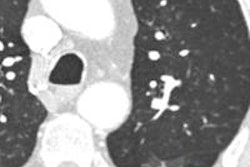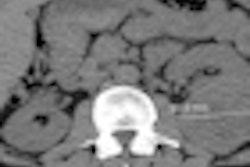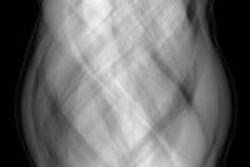Cardiac CT detects serious extracardiac malignancies in one of every 150 patients, a prevalence that could have serious ramifications regarding who should be reading heart CT studies -- radiologists or cardiologists, or both, according to a new study in the September edition of the American Journal of Roentgenology.
In a meta-analysis that included more than 15,000 patients spread across 19 studies, CT found a rate of about 0.7% of serious extracardiac malignancies, three-fourths of which were previously unknown, wrote the research team. Still, they noted, the prevalence of all cardiac abnormalities, not just cancers, varied widely across the studies.
"Although the prevalence of reported incidental extracardiac finding at cardiac CT was highly variable, a homogeneous prevalence of previously unknown malignancies was reported across the studies," Dr. Nicola Flor and colleagues from Azienda Ospedaliera San Paolo and other centers in Milan wrote. Extracardiac findings at cardiac CT require careful evaluation and reporting, they concluded (AJR, September 2013, Vol. 201:3, pp. 555-564).
Cardiac CT, the first-line diagnostic tool for patients at low and moderate risk of coronary artery disease, is distinct from other cardiac imaging modalities such as echocardiography, SPECT myocardial perfusion imaging, and conventional angiography in its ability to detect extracardiac cancers in a variety of organs and locations, according to the authors.
"Cardiac CT images generally include portions of the lungs, pleura, chest wall, mediastinum, dorsal spine, and upper abdomen," Flor and colleagues wrote. "Considering the increasing availability of advanced CT scanners and the number of cardiac CT studies, incidental extracardiac findings are frequently detected in clinical practice." Of these, significant numbers are previously unknown malignancies.
Several studies have looked at incidental cardiac findings, but the goal of this analysis was to examine the prevalence of extracardiac findings in cardiac CT patients to develop an estimate of how often they occur.
The group searched the PubMed, Embase, and Cochrane databases for studies reporting incidental extracardiac findings on CT. After several stages of review that incorporated both manual and computerized searches, 19 studies including 15,877 patients (67% male) were found to meet the study criteria.
In all, 15,877 patients (10,194 male and 5,683 female) were included in the analysis. Regarding the subjects' clinical status, two studies included healthy volunteers, 13 were restricted to patients with suspected coronary artery disease, and two included patients with atrial fibrillation. One study examined patients undergoing calcium scoring, while another looked at the pulmonary veins. Another study evaluated coronary artery bypass grafts, and a final study examined a combination of these populations.
The authors performed a three-level analysis to determine the prevalence of patients with extracardiac findings, then the prevalence of patients with major cardiac findings, and finally the prevalence of patients with proven cancer.
Serious findings in close to 1%
Across all 19 studies, the prevalence rate for detecting an incidental extracardiac abnormality was 44% (95% confidence interval [CI]: 35%-54%) -- or about one in every 150 patients scanned. However, the data suffered from high heterogeneity that defied efforts to explain it by parsing the populations. Some studies had large numbers of extracardiac findings, while others had very few. The prevalence rate for the detection of a major incidental extracardiac finding was 16% (95% CI: 14%-20%).
The authors hypothesized that several factors -- especially different levels of attention paid to detecting incidental findings in the first place -- played a role in the variety of prevalence rates.
The prevalence became steadier and more predictable when detecting incidental cancers rather than just findings, especially for previously unknown cancers.
The pooled cancer prevalence for 10 studies that included 5,082 patients was 0.7% (95% CI: 0.5%-1.0%), with almost perfect homogeneity, the authors wrote. The 29 reported malignancies included 21 (72%) lung cancers, three thyroid cancers, two breast cancers, two liver cancers, and one mediastinal lymphoma, Flor and colleagues reported.
"From an epidemiologic and clinical point of view, our results pointed out that performing cardiac CT implies a nonnegligible probability to diagnose a previously unknown cancer, which can be compared with that observed in recent CT trials for lung cancer screening, ranging from 0.3% to 2.7%, depending on population characteristics such as age, sex, and smoking history," they wrote.
Another useful guide is the fact that many risk factors for lung cancer mirror those for coronary artery disease; therefore, "referring physicians, patients, radiologists, cardiologists, and cardiac surgeons should be aware that when cardiac CT is performed, a collateral screening for extracardiac malignancies, mostly lung cancers, is being performed as well," the study team wrote. And clearly, some findings merit immediate attention.
"For approximately 0.5% to 1% of patients undergoing cardiac CT, an incidental extracardiac finding may be immediately more important than a high calcium score or a coronary artery stenosis," Flor and colleagues wrote.
"This prevalence of incidental extracardiac findings implies a relevant issue for the medical profession: Cardiac CT deserves careful analysis and reporting by radiologists who should have both cardiac and thoracic (lung) CT expertise," they wrote. "As an alternative, if cardiologists report on only the 'cardiac' CT study, a second review should be performed by a thoracic radiologist, resulting in a double cost to healthcare systems for reporting cardiac CT results."



















